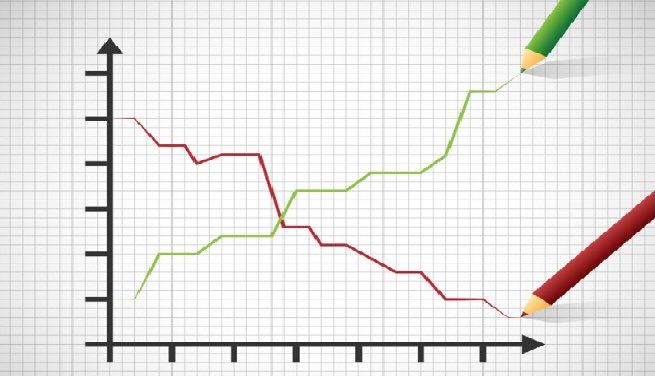MarketLens
Will Silver Shortage Drive Prices Skyward?
The silver market is poised for significant price increases due to a persistent structural deficit, where demand consistently outstrips supply. This report synthesizes recent data and expert opinions to illustrate the underlying trends driving this deficit, the implications for investors and industries reliant on silver, and the potential for future price movements.
Overview of the Silver Market
The silver market has been characterized by a structural deficit for four consecutive years, with the shortfall expected to widen significantly in 2024. According to the Silver Institute, global silver demand is projected to reach approximately 1.2 billion ounces, reflecting a 2% increase from the previous year, while supply is anticipated to decrease by 1%. This imbalance results in a projected deficit of around 215.3 million ounces, underscoring the ongoing challenges in meeting industrial and investment demand.
Demand Dynamics
The demand for silver is increasingly driven by industrial applications, which now account for 64% of total consumption. Key sectors contributing to this demand include renewable energy technologies, particularly solar energy, electric vehicles, and electronics. The solar energy sector alone has seen a remarkable uptick in demand, with photovoltaic capacity additions rising by 20% in 2023. This trend is expected to continue, further solidifying silver’s role as a critical component in green technologies.
Supply Constraints
On the supply side, the silver market faces significant challenges. The overall production of silver is projected to decline, with estimates suggesting a decrease of around 1% in 2024. This decline is exacerbated by geopolitical tensions, labor strikes, and operational difficulties in major silver-producing countries such as Mexico and Argentina. The cumulative effect of these factors is a tightening supply that cannot keep pace with the burgeoning demand.
Price Trends and Market Sentiment
The price of silver has shown resilience in the face of these supply-demand dynamics. As of mid-July 2024, silver prices have surged approximately 30% since the beginning of the year, reaching levels around $32.07 per ounce. Analysts predict that prices could rise further, with forecasts suggesting potential targets between $30 and $48 per ounce by the end of 2024. This bullish sentiment is supported by technical indicators, including a breakout from a bullish pennant pattern, suggesting that upward momentum may continue.
Expert Opinions
Industry experts are largely optimistic about silver’s future price trajectory. Keith Neumeyer, CEO of First Majestic Silver, emphasizes that the ongoing supply deficit indicates that silver is currently undervalued, with projections suggesting prices could reach as high as $100 per ounce in the long term. This perspective is echoed by other analysts who highlight the historical context of silver prices and the potential for significant appreciation as market fundamentals shift.
Implications for Stakeholders
Investors
For investors, the current structural deficit presents a compelling case for silver as a strategic asset. The combination of rising industrial demand, particularly in green technologies, and constrained supply creates a favorable environment for price appreciation. Investors looking for a hedge against inflation and currency devaluation may find silver an attractive option, especially as global economic uncertainties persist.
Industries
Industries reliant on silver, particularly those in the renewable energy and electronics sectors, must navigate the challenges posed by rising prices and potential supply shortages. Companies may need to explore alternative materials or invest in recycling initiatives to mitigate the impact of increasing silver costs. Additionally, the ongoing demand for silver in emerging technologies, such as artificial intelligence and electric vehicles, underscores the importance of securing stable supply chains.
Recent Developments and Future Outlook
Recent economic indicators suggest a cautiously optimistic global growth outlook, with the International Monetary Fund projecting a 3.2% increase in global GDP for 2024. However, the performance of the Chinese economy, a significant consumer of silver, remains a concern due to its slowing GDP growth. This situation could impact silver demand, particularly if economic conditions lead to reduced industrial activity.
Despite these challenges, the structural deficit in the silver market is expected to persist, driven by the ongoing demand from industrial applications. The Silver Institute’s forecast of a 215.3 million-ounce deficit in 2024 marks the second-largest shortfall in over two decades, reinforcing the bullish outlook for silver prices.
Price Manipulation Concerns
An additional layer of complexity in the silver market is the issue of price manipulation, particularly through futures contracts. Analysts have raised concerns about the suppression of silver prices despite the fundamental supply-demand imbalance. This manipulation, if addressed, could lead to a significant repricing of silver, aligning market prices more closely with the underlying fundamentals.
Conclusion
In conclusion, the silver market is currently experiencing a pronounced structural deficit that suggests higher prices ahead. The interplay of increasing industrial demand, particularly in renewable energy and technology sectors, coupled with declining supply, creates a robust environment for price appreciation. Investors and industries must remain vigilant in navigating this evolving landscape, as the potential for significant price increases looms on the horizon. As the market continues to grapple with these dynamics, silver is likely to emerge as a critical asset in the portfolios of investors seeking to capitalize on its growth potential in the coming years.
Related Articles
Category
You may also like
No related articles available
Breaking News
View All →No topics available at the moment






